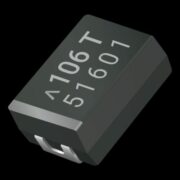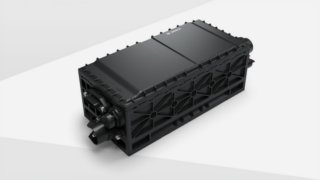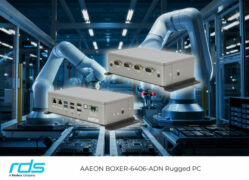Managing director at Nexus Industrial Memory, Michael Barrett, reflects on the rise and, in some cases, fall of commercial removable memory device formats
Removable flash memory devices have been around for more than two decades. Uses include the transfer or storage of files, a means of implementing software or firmware upgrades and user authentication. Devices are available in different form factors, the most familiar being the Secure Digital SD memory card and the USB stick.
Commercial memory evolution
Prior to the advent of SD in 1999, the MultiMediaCard was a prevalent format.
Launched in 1997, it was created mainly for use in digital cameras, mobile phones and PDAs. MMC had an identical outline to SD but was thicker at 2.1mm compared to 1.4mm. This
meant SD cards could be used in MMC receptacles but not vice versa.
The MMC was not to last, however and it was not just this physical difference that marked its demise. SD’s ability to carry Secure Digital Music Initiative software, intended to combat music piracy, also helped it gain traction.
The SD form factor then evolved over the years. The first derivative was the Mini-SD which, at two-thirds the size of the standard SD, was an ideal solution for mobile phones and cameras. However, the introduction of the significantly smaller Micro-SD in 2005 signalled the end for the Mini-SD and production of these cards ceased in 2008.
SD and Micro-SD are now well established but both have been through iterations. The original, known as Secure Digital Standard Capacity, carrying 1MB to 2GB, was followed by larger-capacity versions called Secure Digital High Capacity, carrying two
to 32GB, and Secure Digital eXtended Capacity from 32GB to 2TB. A fourth version, the Secure Digital Ultra Capacity, from two to 128TB, is due for release soon.
In most cases these iterations involved changes to the read mechanism, with products designed to take smaller capacity cards unable read higher capacity ones without a firmware upgrade.
The other commercial stalwart is of course USB, which has also been through a few iterations regarding speed. As for the form factor, there are different types of connector, and the trend is towards smaller. For example, with the popularity of cloud- based storage and wireless connectivity, Apple has, for some years, not included USB Type-A receptacles on its MacBooks, but mass-produced USB sticks are still geared for Type A.
Industrial memory trends
Leaving aside commercially available removable memory device formats, there are industrial formats which
pre-date even MMC. Such devices are ideal for products that must be future-proofed against obsolescence, and are therefore popular in the defence, transportation and renewable energy sectors. Long-term availability is just one advantage. Industrial devices are also more rugged and are rated for far more connect/disconnect cycles than, say, USB.
Furthermore, industrial form factor devices provide an added degree of security. If a device were to be lost, a corresponding receptacle would be needed to interface with it. Likewise, if an end product is fitted with a bespoke receptacle, this safeguards against someone trying to introduce malware via USB stick.










